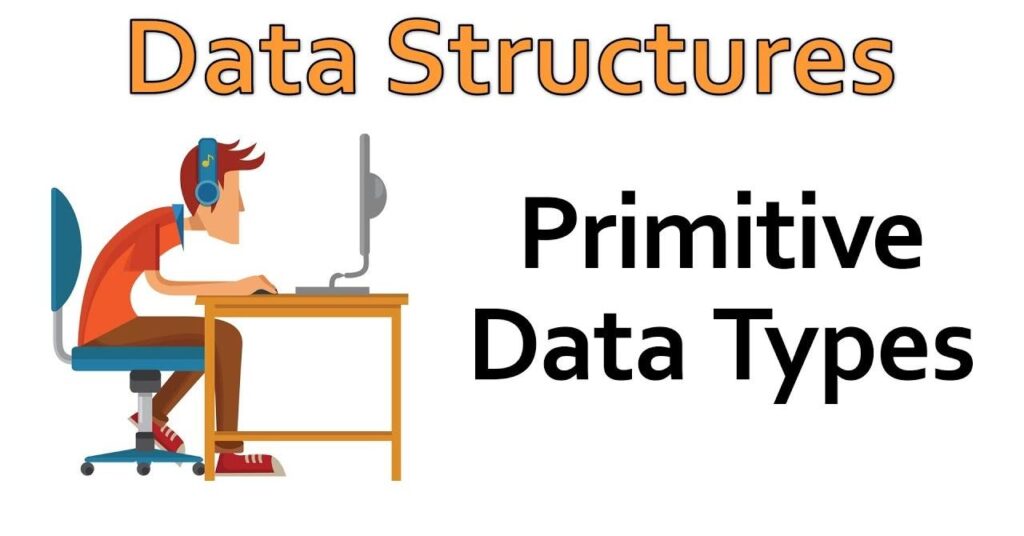Are you curious to know what is primitive data structure? You have come to the right place as I am going to tell you everything about primitive data structure in a very simple explanation. Without further discussion let’s begin to know what is primitive data structure?
In the world of programming, data is at the core of every application. Data structures provide a systematic way to organize and manipulate data efficiently. One fundamental category of data structures is primitive data structures. In this blog post, we will explore the concept of primitive data structures, their characteristics, and their importance in programming.
What Is Primitive Data Structure?
Primitive data structures, also known as basic data types, are the fundamental building blocks of programming languages. They represent simple values that are directly supported by the programming language itself. These data types are predefined and typically have a fixed size and range of values. They are used to represent basic values such as numbers, characters, and Boolean values.
Characteristics Of Primitive Data Structures:
- Simplicity: Primitive data structures are simple and straightforward. They represent basic data types that are commonly used in programming.
- Predefined: Primitive data types are predefined by the programming language and are built-in. They do not require any additional definitions or declarations.
- Fixed Size: Each primitive data type has a fixed size in memory, which is determined by the programming language. For example, an integer may be represented by 4 bytes in memory.
- Direct Language Support: Primitive data types are directly supported by the programming language itself, allowing for efficient and optimized operations.
Common Types Of Primitive Data Structures:
- Integer: The integer data type represents whole numbers without any decimal points. It can be used to store values such as 1, 10, -5, or 1000.
- Floating-point: The floating-point data type represents numbers with decimal points. It can be used to store values such as 3.14, -0.5, or 1.2e6.
- Character: The character data type represents individual characters, such as letters, digits, or symbols. It can be used to store values like ‘A’, ‘5’, or ‘&’.
- Boolean: The Boolean data type represents logical values, either true or false. It is commonly used in conditional statements and logical operations.
Importance Of Primitive Data Structures:
- Efficiency: Primitive data structures are directly supported by the programming language, allowing for efficient memory allocation and optimized operations. They are designed to be lightweight and provide fast execution.
- Basic Operations: Primitive data types enable fundamental operations such as arithmetic calculations, logical comparisons, and character manipulation. They serve as the foundation for more complex data structures and algorithms.
- Interoperability: Primitive data structures are standardized across programming languages, making it easier to exchange data between different systems and platforms. They provide a common ground for data representation and communication.
- Memory Management: Understanding the size and characteristics of primitive data structures helps in managing memory efficiently. It allows developers to estimate memory requirements and optimize resource usage.
Conclusion:
Primitive data structures are the fundamental building blocks of programming languages. They represent basic data types and provide efficient and optimized operations. Understanding primitive data structures is essential for every programmer as they form the foundation of more complex data structures and algorithms. By leveraging primitive data structures effectively, developers can efficiently handle and manipulate data in their programs, ensuring optimal performance and functionality.
FAQ
What Is Primitive And Non-Primitive Data Types?
Primitive types are predefined (already defined) in Java. Non-primitive types are created by the programmer and is not defined by Java (except for String ). Non-primitive types can be used to call methods to perform certain operations, while primitive types cannot.
What Is Primitive Data Type With Example?
Examples of primitive data types include integers, floating point numbers and individual characters in text. Each of these primitive data types is an example of something that doesn’t require a large amount of data for representation. Characters simply correspond to a single reference point in an ASCII chart.
What Is Primitive Data Structure In Java?
A primitive type is predefined by the language and is named by a reserved keyword. Primitive values do not share state with other primitive values. The eight primitive data types supported by the Java programming language are: byte: The byte data type is an 8-bit signed two’s complement integer.
What Are The Primitive Data Structures In Ds?
The primitive data structures are primitive data types. The int, char, float, double, and pointer are the primitive data structures that can hold a single value. The non-primitive data structure is divided into two types: Linear data structure.
I Have Covered All The Following Queries And Topics In The Above Article
What Is Non Primitive Data Structure
Primitive Data Structure Example
Primitive And Non Primitive Data Structure
Difference Between Primitive And Non Primitive Data Structure
Explain Primitive And Non Primitive Data Structure With Example
Non Primitive Data Structure Example
Primitive And Non Primitive Data Types In Python
Primitive And Non Primitive Data Structure In C
What Is Primitive Data Structure
What are the primitive data structure operations






